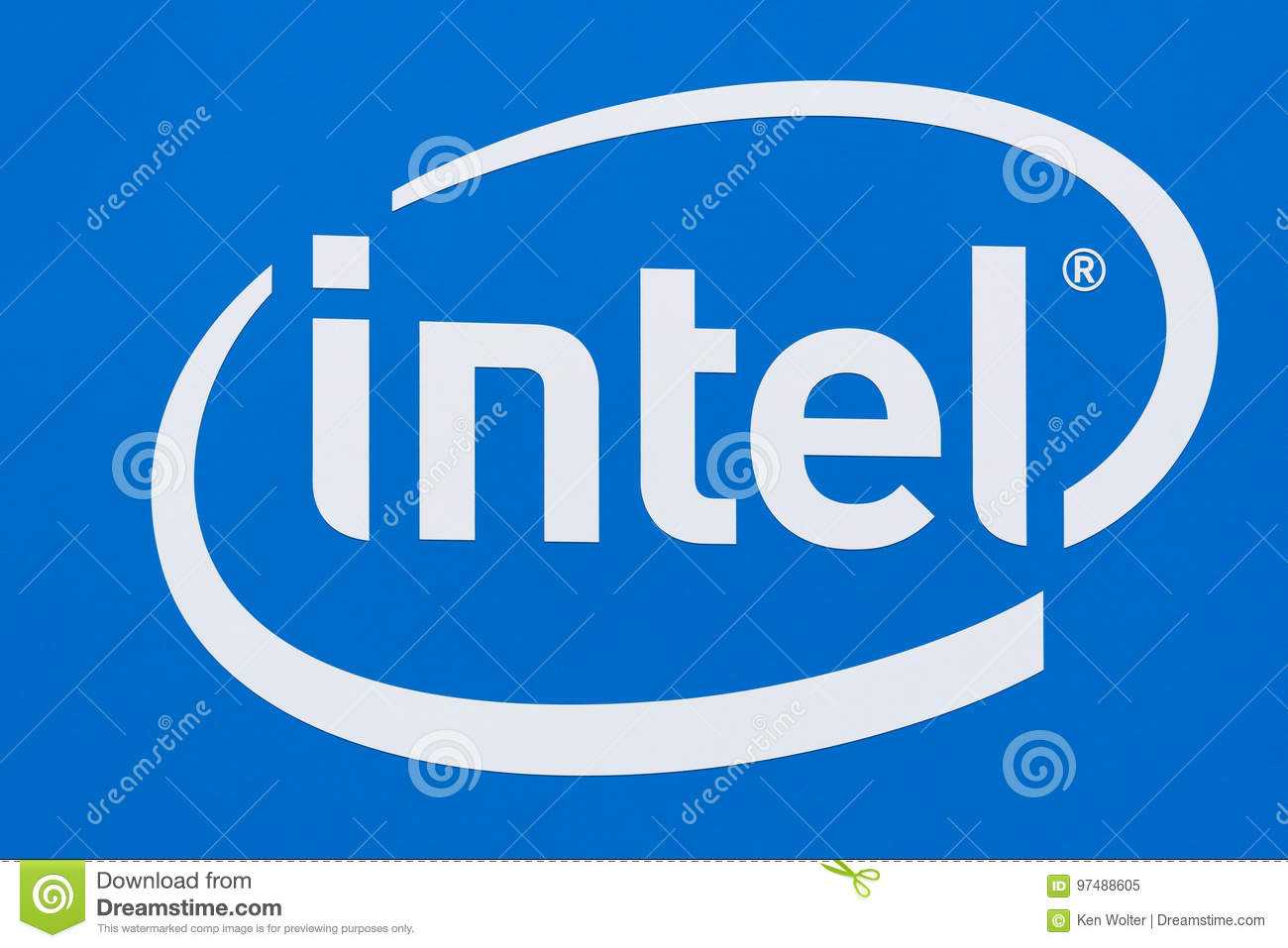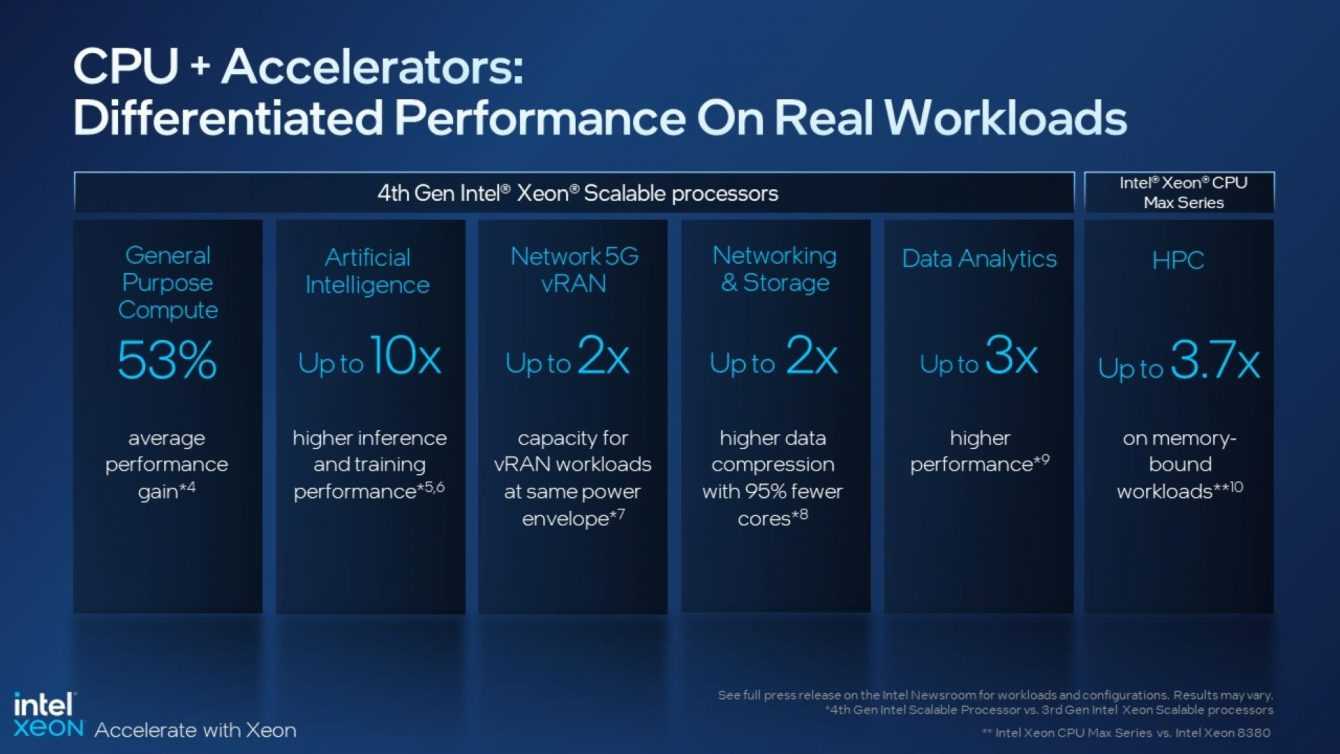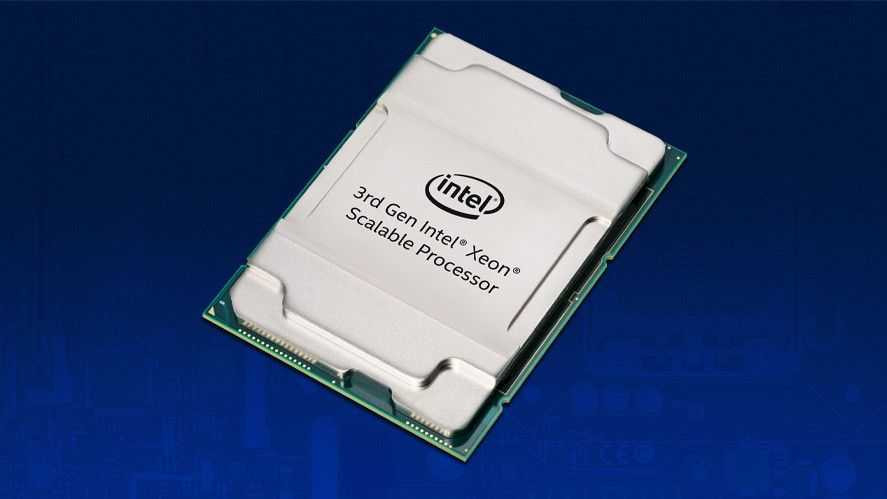
Intel announces the fourth generation of Xeon Scalable processors, along with Max Series CPUs and GPUs. These products show higher performance in AI, networking and high performance computing
Today the company Intel (here for more info) scored one of the most important product launches of its history. Let’s talk about the presentation of the new fourth generation Intel Xeon Scalable processors (codenamed Sapphire Rapids). Moreover, Intel Xeon Max Series CPUs were also unveiled (codenamed Sapphire Rapids HBM) e le GPU Intel Data Center Max Series (codename Ponte Vecchio). These products determine an important qualitative leap in terms of performance, efficiency and security in the data center environment. As well as offering new capabilities for AI, cloud computing, networking and the edge, and for the world’s most powerful supercomputers.
Information about Intel’s new Xeon Scalable processors
Extensive customer and partner adoption with AWS, Cisco, Cloudera, CoreWeave, Dell Technologies, Dropbox, Ericsson, Fujitsu, Google Cloud, Hewlett, and many more. With more built-in accelerators than any other CPU in the world. The 4th Generation Intel Xeon Scalable and Intel Max Series families deliver top-level performance! This is thanks to a specialized approach and priority attention to the workloads to be satisfied. 4th Generation Intel Xeon Scalable processors are highly sustainable; thanks to a range of features that optimize performance and consumption by making efficient use of CPU resources. Compared to previous generations, 4th Generation Xeons have an average 2.9x higher performance per watt when using the integrated accelerators. In addition to saving up to 70 Watts per CPU in accelerated mode, with minimal performance losses on only some workloads. Finally, they have a total cost of ownership (TCO) between 52% and 66% lower.

Details on Intel Xeon Scalable processors
Developed with customer and partner needs in mind. 4th Generation Xeons Enable Intel to Deliver Differentiated Systems and Solutions at Scale to Meet the Most Challenging Computing Challenges. Intel provides a unique approach to specialized, workload-based performance acceleration and highly optimized software for specific uses. This allows the company to deliver the right performance at the right horsepower and optimal total cost of ownership. In addition, 4th generation Xeons are Intel’s most sustainable data center processors. With a series of features to manage consumption and performance that make optimal use of CPUs, contributing to the achievement of users’ sustainability goals.
Statements
The launch of the fourth generation Xeon Scalable processors and Max Series product family is a pivotal moment in restarting Intel’s path to data center leadership and growing our presence in new arenas,
said Sandra Rivera, executive vice president e general manager, Datacenter and AI Group di Intel.
The Xeon 4th Generation and Max Series product families deliver what users really want: best-in-class performance and reliability in a secure environment, accelerating time-to-value and keeping them at the pace of innovation.
Unlike other data center processors already on the market, the fourth generation Xeon family extends Intel’s workload-first approach.
The best performance and the benefit of sustainability thanks to integrated accelerators
Today, there are over 100 million Xeons installed in corporate servers on the market. These run IT services, including new as-a-service business models, networking devices that manage Internet traffic, wireless base stations for edge computing, and cloud services. Decades of data center and networking experience and a leadership position in intelligent innovation at the edge. The new 4th generation Xeon processors feature more built-in accelerators than any other CPU available in the world today. Delivering high performance and enabling users to meet their AI, analytics, networking, security, storage, and HPC needs.
Compared to previous generations, with the new 4th Generation Intel Xeon we will get an average of 2.9x higher performance per watt on specific workloads. With energy savings of up to 70 Watts per CPU in optimized modewith minimal loss in performance, and a 52% to 66% lower TCO.

Sustainability of the new Intel Xeon Scalable processors
The large number of accelerators integrated into the fourth generation Xeons saves energy across the platform. Reducing the need for additional discrete accelerators and thereby helping to achieve sustainability goals. Additionally, the new Optimized Power mode enables energy savings of up to 20% at the outlet with less than 5% performance impact on select workloads. Innovations in air and liquid cooling enable further reductions in data center energy consumption. As for the manufacturing process, the fourth generation Xeons are made using 90% more renewable energy in Intel plants equipped with advanced wastewater recovery systems.
Artificial intelligence
In AI applications, compared to the previous generation, the 4th generation Xeon processors achieve PyTorch real-time inference and instruction performance up to 10 times 5,6 higher. That is thanks to integrated Intel Advanced Matrix Extension (Intel AMX) accelerators. These processors enable new levels of performance on many AI inference and education workloads. The Xeon Max Series CPU builds on a natural language processing capability to improve its performance up to 20X when applied to large language models. With Intel’s AI software suite, developers can use the tools of their choice to increase productivity and speed development time for AI applications. The suite is portable from workstations and scalable in the cloud to the edge. It is also validated against more than 400 machine learning and deep learning models covering the most common use cases across all industries.
Networking
The fourth generation of Xeon offers a family of processors specifically optimized for high performance and low latency on network and edge computing workloads. These processors are a key part in building a more software-defined future for manufacturing industries. These include telecommunications, retail, manufacturing and smart cities. For 5G workloads, built-in accelerators help increase throughput and decrease latency. While more advanced power management improves both response times and platform efficiency. In addition, compared to previous generations, Xeon Gen 4s offer up to twice the vRAN (virtualized radio access network) capacity. Without increasing energy consumption. This allows telecom service providers to double the performance per watt and meet their needs for performance, scalability and energy efficiency.
High Performance Computing
The Xeon Max Series CPU is the first and only x86-based processor with high-bandwidth memory. This allows you to accelerate many high performance computing workloads without making code changes. The Intel Data Center Max Series CPU is the company’s highest-density processor. This will be available in different form factors to meet different usage needs. The Xeon Max Series CPU offers 64 gigabytes of high-bandwidth memory (HBM2e) in the same package, significantly increasing data throughput for HPC and AI workloads. Moreover, the Data Center Max Series GPU features over 100 billion transistors in a 47-tile package. Delivering a very high level of throughput for demanding workloads such as physics, financial services and life science applications. Coupled with the Xeon Max Series CPU, it achieves up to 12.8 times faster performance than the previous generation when using a molecular dynamics simulator LAMMPS.

The most secure and feature-rich Xeon platform of all time
The fourth generation Xeon platform is an acceleration marvel, but also a major manufacturing success. With up to four Intel 7-built tiles per single package connected via Intel’s EMIB (embedded multi-die interconnect bridge) packaging technology. Plus new features including increased memory bandwidth with DDR5, increased I/O bandwidth with PCIe5.0 interconnect, and Compute Express Link (CXL). The biggest platform transformation Intel has offered. Underlying everything is security. With Xeon Gen 4, Intel offers the most comprehensive portfolio of confidential computing among all data center silicon vendors. By enhancing data security, regulatory compliance and data sovereignty.
Intel’s wide range of Xeon Scalable processors
In the end, Xeon Gen 4 modular architecture allows Intel to offer a wide range of processors for nearly 50 SKUs targeted for use cases or applications. From general purpose to specific applications for cloud, database and analytics, networking, storage and single-socket edge use cases. The Xeon Gen 4 processor family supports On-Demand applications and varies in core count, frequency, accelerator mix, power, and memory throughput. Depending on the use cases and form factors specified by users for their needs.
And you? What do you think of these new Intel Xeon Scalable processors ? Let us know with a comment below and always stay tuned to TechGameWorld.com for other news and reviews from the world of technology (and beyond!).
The article Intel: new Xeon Scalable processors announced comes from TechGameWorld.com.















Leave a Reply
View Comments